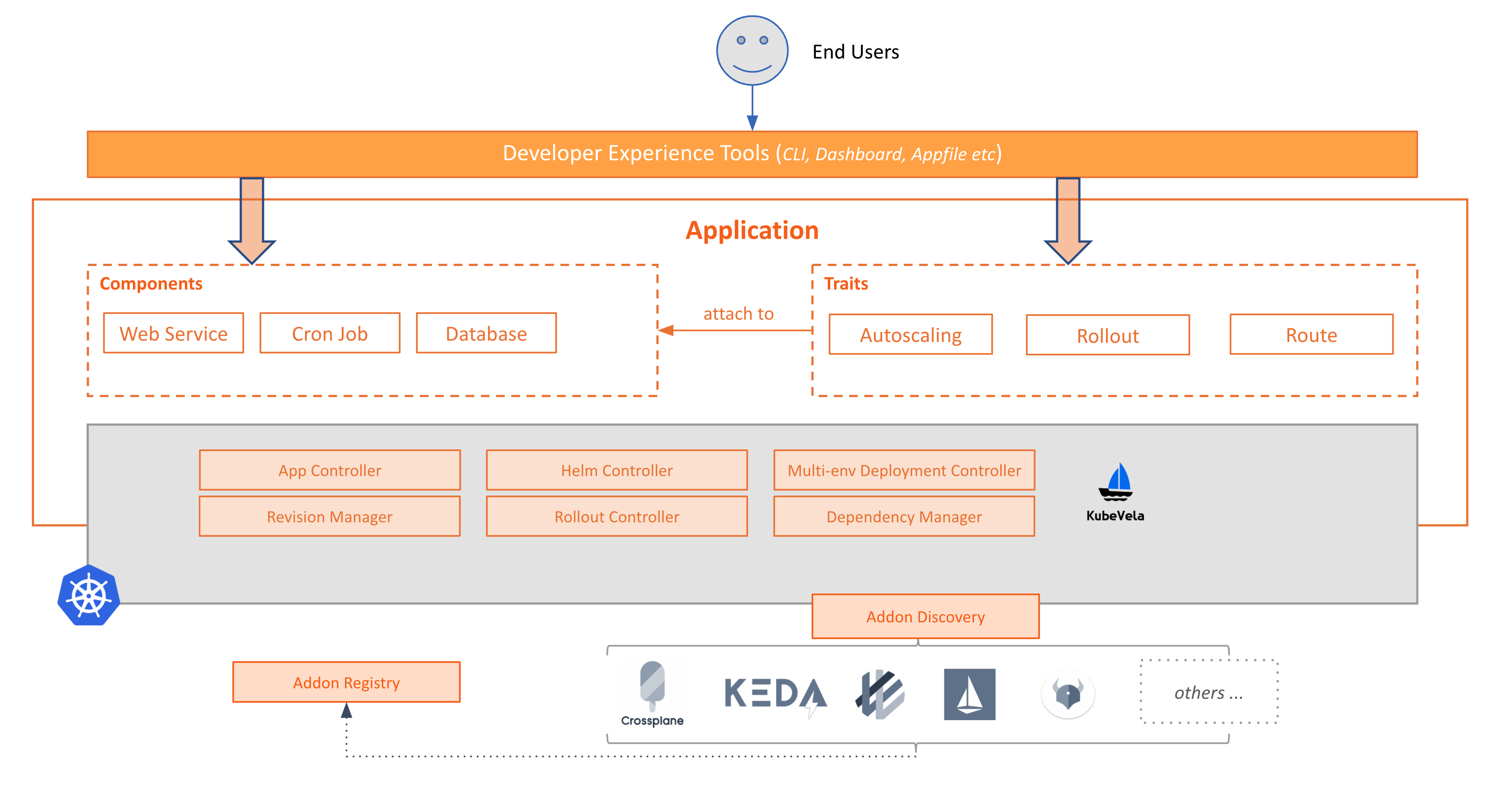By KubeVela Community
On June 22, 2021, KubeVela was voted and passed at the TOC meeting of the Cloud Native Computing Foundation (CNCF) and became the official sandbox project of CNCF. In the future, KubeVela, which is transparent, open, open-source, and neutral, will continue to strive to create a unified, standard, and cross-cloud application management and delivery experience.
"KubeVela is such a user-oriented upper platform project. Besides, KubeVela is a simple and easy-to-use tool that allows business developers to define and deploy applications on Kubernetes with a low mental burden and cost. More importantly, KubeVela is not a simple PaaS or a Serverless platform. It is a PaaS kernel that can be expanded freely in the native Kubernetes manner that platform engineers can build any vertical business system based on it," said Zhang Lei, a CNCF TOC member.
Cloud-native technologies are using Kubernetes as their common abstraction layer and moving towards consistent application delivery across the cloud. Kubernetes performs well in the detailed abstraction of the underlying infrastructure, but it brings additional complexity. Different types of PaaS platforms based on Kubernetes are established and interconnected. Therefore, the platform team that serves for application development does not have a proper framework to build user-friendly and highly scalable abstractions. Meanwhile, application delivery is becoming fragmented in increasingly complex business scenarios, such as hybrid cloud, multiple clouds, and distributed cloud.
KubeVela, an application delivery engine developed with Go, can help us overcome all the challenges above. As an Open Application Model (OAM) implementation in Kubernetes, the KubeVela project has developed rapidly since oam-kubernetes-runtime. It has ranked first in the Go language trend on GitHub continuously, been featured at the top of the HackerNews homepage, and harvested end users from different industries worldwide quickly, including MasterCard, Springer Nature, 4Paradigm, SILOT, and Upbound. Various commercial products are built on it, such as Oracle Cloud and Napptive. At the end of March 2021, the KubeVela community announced the release of version 1.0 with all stable APIs, moving towards production availability at the enterprise level.

KubeVela Technical Architecture Diagram
As a framework for platform developers, KubeVela reduces the cost of building a developer-centric platform by executing the following operations:
With KubeVela, platform builders finally have tool support to design easy-to-use abstractions and deliver them to end-users with high confidence and low turnaround times.
For end-users like application developers, this abstraction with KubeVela will enable them to design and publish applications to Kubernetes with minimal effort. All they have to do is define a simple application that can be integrated easily with any CI/CD without managing some infrastructure details.
Furthermore, many current typical application scenarios of KubeVela include:
KubeVela uses the following roadmap to meet the faster, more changeable, and more complex application delivery requirements in the cloud-native environment:
On May 26, 2021, the Cloud Computing Open Application Architecture standard document, initiated jointly by more than ten units, including Alibaba Cloud Computing Co., Ltd. and the China Academy of Information and Communications Technology, was released at the Cloud Native Industry Conference. This architecture is based on the Open Application Model (OAM), initiated jointly by Alibaba Cloud and Microsoft Cloud. It aims to provide cloud application managers with unified application description specifications and open application capabilities. By doing so, the framework can promote the large-scale implementation of simple, efficient, and controllable cloud-native application management and delivery methods in more industries and enterprises.
We can see that OAM, the KubeVela API specification, is gathering industry consensus. The KubeVela community has also been recognized by achieving more than 22,000 stars on GitHub, attracting over three maintainers and over 85 contributors to build together. Besides, many other users, such as SheIn, Deepexi, HarmonyCloud, and ForChange, began to use KubeVela in the production environment.
We welcome all developers interested in application delivery to join us! Please visit the official KubeVela website and join the community group to learn how to use KubeVela. If you are already using KubeVela, you are welcome to register the issue in the community cases and leave your information to let the community know your demands.
As always, KubeVela will work with the community to make cloud application delivery easier!
[1] CUELang
https://github.com/cuelang/cue
[2] Helm
https://helm.sh/
[3] Kubernetes Control Loop
https://kubernetes.io/docs/concepts/architecture/controller/
[4] Kubernetes Custom Resources
https://kubernetes.io/docs/concepts/extend-kubernetes/api-extension/custom-resources/
Performance Comparison and Stress Testing – Nacos 1.0 vs. Nacos 2.0

518 posts | 51 followers
FollowAlibaba Cloud Native Community - March 1, 2023
Alibaba Developer - November 17, 2021
Alibaba Developer - February 9, 2021
Alibaba Cloud Native Community - March 8, 2023
Alibaba Cloud Native Community - May 31, 2022
Alibaba Cloud Native Community - December 2, 2021

518 posts | 51 followers
Follow Bastionhost
Bastionhost
A unified, efficient, and secure platform that provides cloud-based O&M, access control, and operation audit.
Learn More Managed Service for Grafana
Managed Service for Grafana
Managed Service for Grafana displays a large amount of data in real time to provide an overview of business and O&M monitoring.
Learn More Cloud-Native Applications Management Solution
Cloud-Native Applications Management Solution
Accelerate and secure the development, deployment, and management of containerized applications cost-effectively.
Learn More Function Compute
Function Compute
Alibaba Cloud Function Compute is a fully-managed event-driven compute service. It allows you to focus on writing and uploading code without the need to manage infrastructure such as servers.
Learn MoreMore Posts by Alibaba Cloud Native Community
Start building with 50+ products and up to 12 months usage for Elastic Compute Service
Get Started for Free Get Started for Free